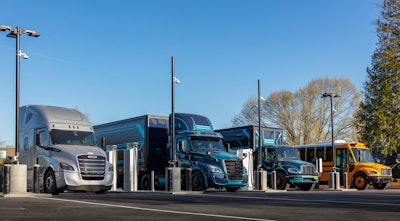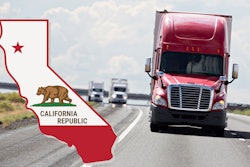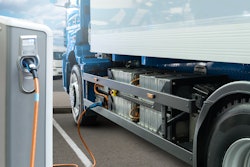
Trucking’s investment boom into alternative fuels and powertrains may feel new, but the industry’s push toward low- and zero-emission vehicles isn’t. The Clean Air Act was passed in 1963; the Environmental Protection Agency (EPA) was founded in 1971. The American government has been working to curb emissions for 60 years.
The first, and still most stringent, emission regulations levied on diesel engines and heavy trucks came in 2007. Progressively stronger regulations have followed at regular intervals for two decades, with the EPA’s next round of standards set to take effect with model year 2027.
California’s decision to mandate the sale of only zero-emission trucks in 2036 accelerates the industry’s timeline but isn’t without precedent. Trucking’s outsized influence on vehicle emissions has always made it a target for regulators.
[RELATED: The transition to clean trucks is underway]
In releasing its Phase 1 program to reduce greenhouse gas emissions (GHG) and improve fuel economy of medium- and heavy-duty vehicles in 2011, the EPA stated, “transportation sources emitted 29% of all U.S. GHG emissions in 2007 and have been the fastest-growing source of U.S. GHG emissions since 1990.” The agency also noted, “within the transportation sector, heavy-duty vehicles are the fastest-growing contributors to GHG emissions.”
In 2011, the EPA said its Phase 1 program would “reduce CO2 emissions by about 270 million metric tons” during 2014-2018. Seven years later, the EPA predicted Phase 2 would “lower CO2 emissions by approximately 1.1 billion metric tons.”
Zeroing in on zero emissions is now the eventual end game for regulators.
In releasing its “Control of Air Pollution from New Motor Vehicles: Heavy-Duty Engine and Vehicle Standards” in December 2022, EPA Administrator Michael Regan stated the Final Rule was the first action in EPA’s Clean Trucks Plan “to pave the way toward a zero-emission future. These rigorous standards, coupled with historic investments from the Inflation Reduction Act and the Bipartisan Infrastructure Law, will accelerate President Biden’s ambitious agenda to overhaul the nation’s trucking fleet, deliver cleaner air and protect people and the planet.”
The EPA’s regulations were met with resistance within government and private enterprise alike. Some detractors felt the regulations unachievable or too extreme within the timeline set forth while others, such as the American Truck Dealers (ATD), questioned the skyrocketing costs that would come from the technological innovation.
“With inflation still at a 40-year high, this rule imposes between $39 and $55 billion in new regulatory costs on the American economy between 2027 and 2045,” said ATD Chairman Scott McCandless. “Consumers will suffer the inflationary effects of the EPA’s rules by paying higher prices for food, clothing and other consumer products that travel by truck.”
When questioned on those points, the EPA told Trucks, Parts, Service in July it is required to “consider whether a standard is achievable (i.e., feasible) and consider cost, energy and safety factors of technologies we project will be used to meet the standards.” The agency also quoted the Section 202 of the Clean Air Act that requires emission regulations “reflect the greatest degree of emission reduction achievable through the application of technology which the Administrator determines will be available for the model year to which such standards apply, giving appropriate consideration to cost, energy and safety factors associated with the application of such technology.”
Both houses of Congress passed a resolution to overturn EPA’s December 2022 Final Rule only for President Biden to veto the resolution. The Truck and Engine Manufacturers Association (EMA) also shared concerns regarding the Clean Trucks Plan in 2022, though EMA and its OEM partners did support December’s regulations when California’s Air Resources Board (CARB) teased even stricter regulations with a protracted timeline earlier this year. The two sides eventually compromised behind the EPA regulations in July.
EMA and its members remain committed to the development and production of low-emission, fuel-efficient diesel engines that can meet the parameters of the Clean Trucks Plan. But the complexity of the upcoming requirements, coupled with advancements in alternative powertrain technologies, state and federal infrastructure and purchase incentive programs and California’s looming ZEV requirements, have all forced truck makers to expand their horizons toward alternative fuels and powertrains.
Keep up with our special report on trucking's transition to cleaner trucks:
Part I: This isn't trucking's first fueling and propulsion revolution
Part III: What constitutes as ‘alternative power’?
Part IV: What will drive — or inhibit — alternative power adoption?
Part V: Performing an alternative power market analysis
Part VI: What it takes to install charging infrastructure
Part VII: Training on alternative powertrains vital to employee safety, business success
Part VIII: The challenges of building your best EV service bay
Part IX: Making the case: How to effectively sell alternative power
Part X: Safety in the Service Bay
Part XI: How electric trucks may transform dealer revenue streams











